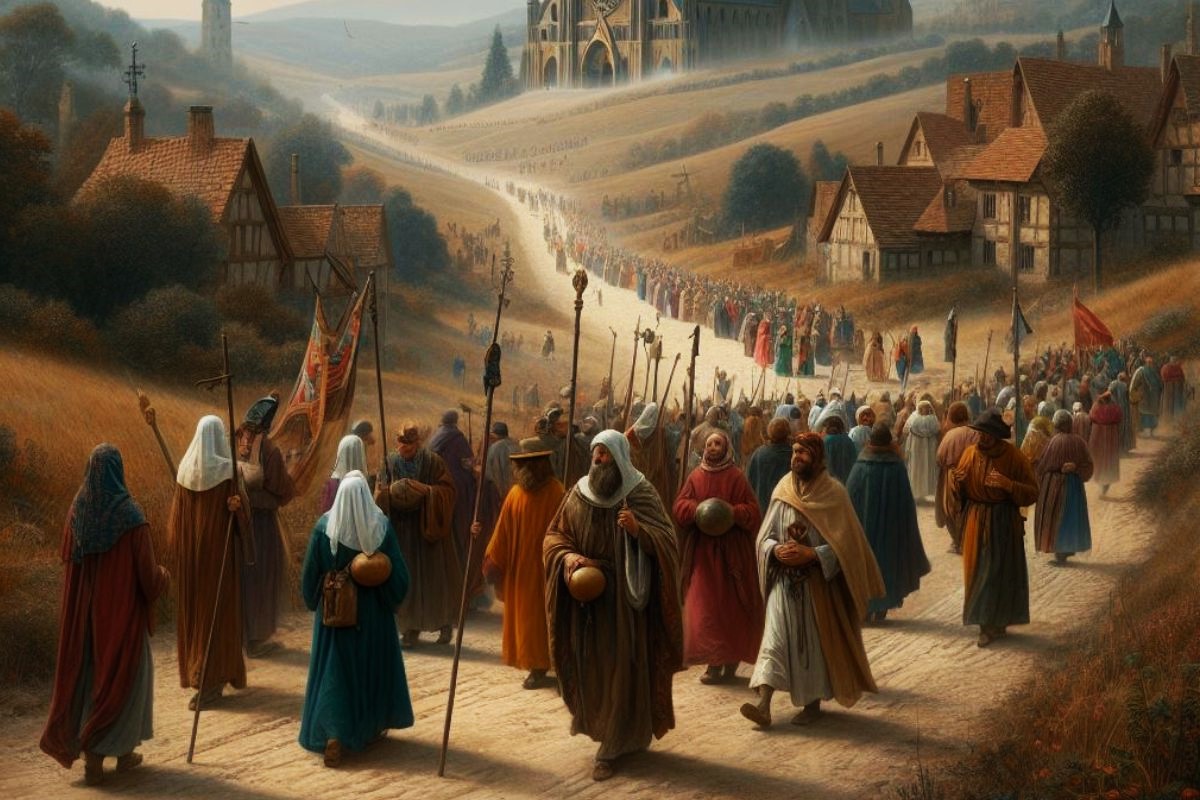
Medieval customs were a mix of strange, fascinating, and sometimes downright bizarre practices. Ever wondered why knights had to follow a strict code of chivalry? Or why peasants celebrated with grand feasts despite their hard lives? Medieval times were filled with unique traditions that shaped the lives of everyone from kings to commoners. From the intricate rituals of courtship to the curious laws governing daily life, these customs offer a glimpse into a world vastly different from ours. Get ready to dive into 35 intriguing facts that will transport you back to the days of castles, knights, and epic battles.
Key Takeaways:
- Medieval feasts were extravagant events that lasted up to a week, featuring exotic dishes and lively entertainment. Leftover food was often given to the less fortunate.
- Clothing in medieval times indicated social status, with bright colors signifying wealth. Sumptuary laws regulated what people could wear based on their rank.
Medieval Feasts and Banquets
Medieval feasts were grand affairs, often lasting several days. They were a way for nobles to display their wealth and power.
- Feasts could last up to a week. Nobles would host these extravagant events to celebrate weddings, victories, or religious holidays.
- Food was served in multiple courses. Each course could include several dishes, often featuring exotic ingredients like peacock or swan.
- Entertainment was a key part of the feast. Minstrels, jesters, and acrobats would perform to keep guests entertained.
- Table manners were quite different. People ate with their hands, and it was common to share drinking vessels and plates.
- Leftovers were given to the poor. After the feast, any remaining food was often distributed to the less fortunate.
Clothing and Fashion
Medieval clothing was not just about style; it also indicated one's social status and occupation.
- Sumptuary laws regulated clothing. These laws dictated what people could wear based on their social rank.
- Bright colors were a sign of wealth. Dyes were expensive, so only the rich could afford brightly colored garments.
- Wool was the most common fabric. It was durable and warm, making it ideal for the medieval climate.
- Men wore tunics and hose. Tunics were long shirts, and hose were tight-fitting pants.
- Women wore long dresses. These dresses often had fitted bodices and long, flowing skirts.
Medieval Justice and Punishment
Justice in the medieval period was harsh and often public. Punishments were designed to deter others from committing crimes.
- Trial by ordeal was common. Accused individuals underwent painful tests, like holding hot iron, to prove their innocence.
- Public executions were a spectacle. These events drew large crowds and served as a warning to others.
- Stocks and pillories were used for minor offenses. Offenders were locked in these devices and subjected to public humiliation.
- Fines were a common punishment. Wealthier individuals could often pay their way out of harsher penalties.
- Torture was used to extract confessions. Devices like the rack and thumbscrews were employed to make prisoners talk.
Daily Life and Work
Daily life in medieval times was hard, with most people working long hours just to survive.
- Most people were peasants. They worked the land and lived in small, simple homes.
- Serfs were bound to the land. They could not leave without the lord's permission.
- Craftsmen formed guilds. These organizations regulated trade and ensured quality standards.
- Women worked alongside men. They helped with farming, weaving, and other essential tasks.
- Children started working young. By the age of seven, many children were already helping with chores or learning a trade.
Religion and Superstition
Religion played a central role in medieval life, influencing everything from daily routines to major events.
- The Church was incredibly powerful. It owned vast amounts of land and had significant political influence.
- Pilgrimages were popular. People traveled to holy sites to seek blessings or penance.
- Relics were highly valued. These were believed to have miraculous powers and were often displayed in churches.
- Superstitions were widespread. People believed in omens, charms, and spells to protect themselves from harm.
- Monasteries were centers of learning. Monks preserved ancient texts and made significant contributions to education.
Warfare and Knighthood
Medieval warfare was brutal, and knights were the elite warriors of their time.
- Knights followed a code of chivalry. This code emphasized bravery, honor, and respect for women.
- Castles were both homes and fortresses. They provided protection during attacks and served as a base for military operations.
- Archers were crucial in battles. Longbows could penetrate armor and were effective from a distance.
- Siege warfare was common. Attackers used trebuchets, battering rams, and other devices to breach castle walls.
- Tournaments were training grounds. Knights participated in these events to hone their skills and gain fame.
Health and Medicine
Medical knowledge in medieval times was limited, and treatments were often based on superstition.
- Bloodletting was a common treatment. Doctors believed it could cure a variety of ailments by balancing bodily humors.
- Herbal remedies were widely used. Plants like garlic and willow bark were used to treat infections and pain.
- Plague doctors wore beaked masks. These masks were filled with aromatic substances to protect them from disease.
- Hospitals were run by religious orders. Monks and nuns provided care for the sick and injured.
- Quarantine was used to control disease. Ships suspected of carrying plague were isolated for 40 days before docking.
Medieval Customs: A Glimpse into the Past
Medieval customs offer a fascinating window into a world vastly different from ours. From feudal systems to chivalric codes, these traditions shaped societies in profound ways. Knights upheld honor through jousting tournaments, while serfs toiled under the watchful eyes of their lords. Festivals and feasts brought communities together, celebrating everything from harvests to religious events. Guilds protected trades and ensured quality, while sumptuary laws dictated what people could wear based on their social status.
Understanding these customs helps us appreciate the complexities of medieval life. They reveal a society deeply rooted in hierarchy, ritual, and community. While some practices may seem strange today, they were integral to the fabric of medieval existence. So next time you read about knights or castles, remember the customs that made that world tick. They’re more than just history; they’re a testament to human ingenuity and adaptability.
Frequently Asked Questions
Was this page helpful?
Our commitment to delivering trustworthy and engaging content is at the heart of what we do. Each fact on our site is contributed by real users like you, bringing a wealth of diverse insights and information. To ensure the highest standards of accuracy and reliability, our dedicated editors meticulously review each submission. This process guarantees that the facts we share are not only fascinating but also credible. Trust in our commitment to quality and authenticity as you explore and learn with us.


